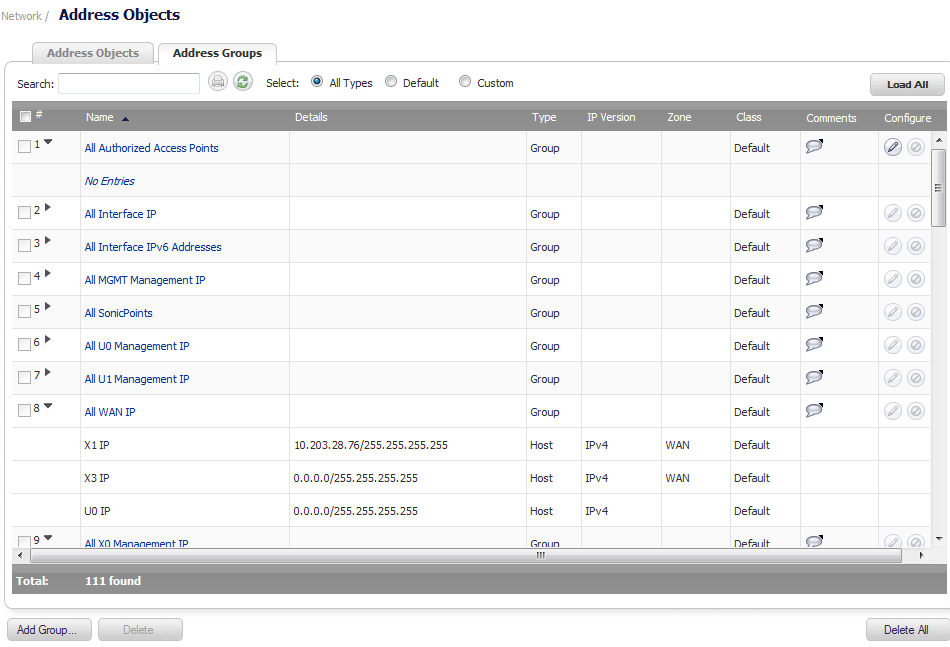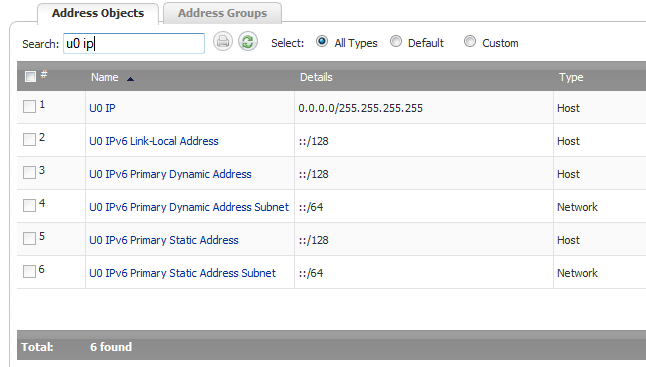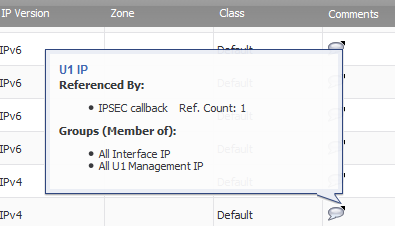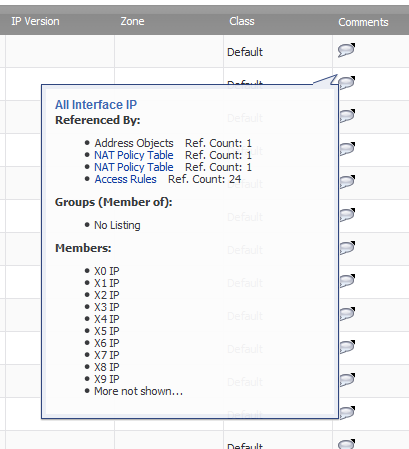|
•
|
Search – Enter a search string to display only those entries containing the string. The search string is case insensitive.
|
|
•
|
Print icon – If your system has a printer, the printer icon becomes active. Click on the icon to print the contents of the table.
|
|
•
|
Refresh icon – Click on the icon to refresh the table display.
|
|
•
|
Select radio buttons – View all or a subset of the entries by selecting one of the radio buttons:
|
|
•
|
All Types - Displays all configured Address Objects or Address Groups.
|
|
•
|
Default - Displays those Address Objects or Address Groups configured by default on the firewall.
|
|
•
|
Custom - Displays only Address Objects or Address Groups with custom properties.
|
|
•
|
Load All button – Click on this button to load all Address Objects or Address Groups.
|
|
•
|
Checkbox – Click to select a custom entry.
|
|
•
|
# – The number of the entry in the table. This number changes depending on whether the column is sorted by ascending or descending order.
|
|
•
|
Name – The unique name of the Address Object or Address Group entry. If an Address Group entry is expanded, this column will show:
|
|
•
|
No Entries if the Address Group does not contain members.
|
|
•
|
Details – Shows the Address Object details. For an Address Group entry, this column is blank; an expanded entry, however, shows the details of the members of the group.
|
|
•
|
Type – Shows the Address Object type, such as Host, Network, Range, or FQDN. For an Address Group, the type is Group; an expanded entry shows the type of each member.
|
|
•
|
IP Version – Shows the IP version of the Address Object or Address Group member: IPv4 or IPv6.
|
|
•
|
Zone – Shows the assigned zone, any, of the Address Object or Address Group member.
|
|
•
|
Class – Shows whether the Address Object or Address Group is default (system defined) or custom (user defined).
|
|
•
|
Comments – Mouse over the Comment icon to display a pop-up window with details about the entry:
|
|
•
|
Address Object – Displays this information:
|
|
•
|
Referenced By: – What references the Address Object and the number of times it has been referenced. If the Address Object has not be referenced, this section will state No Listing.
|
|
•
|
Groups (Member of): – List of groups to which the Address Object belongs. If the Address Object does not belong to a group, this section will state No Listing.
|
|
•
|
Address Group – Displays this information:
|
|
•
|
Referenced By: – What references the Address Group and the number of times it has been referenced. If the Address Group has not be referenced, this section will state No Listing.
|
|
•
|
Groups (Member of): – List of groups to which the Address Group belongs. If the Address Group does not belong to a group, this section will state No Listing.
|
|
•
|
Members: – List of Address Objects that belong to this group. If the Address Group does not contain members, this section will state No Listing.
|
|
•
|
Configure — Displays Edit and Delete icons for individual entries. Only custom Address Objects and Address Groups can be deleted; only custom entries and some default entries can be edited. If an entry cannot be edited or deleted, the icon(s) will be dimmed.
|





